| LIVING MEGASTRUCTURES |
||||
|
a film by Sabine Bitter und Helmut Weber
Venezuela/Germany/Austria 2003/04 23 Minutes spanish with english subtitles |
<< |
|||
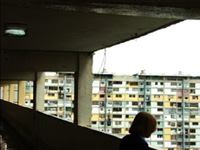 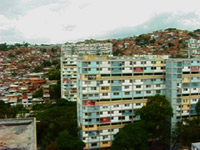 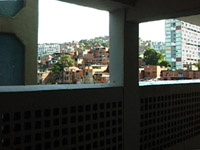 |
||||
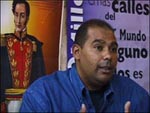  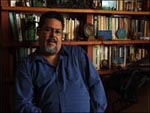 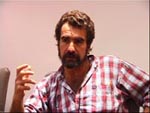  |
In the video, Caraqueños are interviewed about the everyday use of two megastructures – the new Constitution of the Bolivarian Republic of Venezuela and the insurgent and informal urbanism of the historically and politically central 23 de Enero. The answers of the architects, social activists, governmental experts, artists and people who live in 23 de Enero who are interviewed examine the relationship between these two productive forces which shape Caracas. The problematic of appropriation is overturned – the limits of appropriation are challenged by new spatial and social relations that smash the program of the oppressive local modernism and open up to greater social participation. The development 23 de Enero is the largest and most important public housing project ever implemented in the Venezuelan capital Caracas. Under the dictatorship of Perez Jimenez Venezuelan architect Carlos Raul Villanueva designed and built a modernist megastructure of 80 apartmentblocks. From 1952 to 1957 the urbanization reshaped the city´s surface but didn't change the precarious political and social situation of its inhabitants. In 1958, during the uprising against the dictatorship of General Pérez Jimenez, 4000 of the 9000 apartments in the unfinished superblocks of 23 de Enero were squatted by campesinos and the poor. Since then, "23rd of January" has been a highly politicized and well-organized urban site which hosts radical social movements and organisations. In retrospect, mass-sqatting and the appropriation of space could be looked at as an insurgent participatory practice similar to what was proposed in Europe in the seventies as „participatory architecture." But, in Venezuela today, participation is associated with the making of the new national constitution in 1999. "Participatory Democracy" is one of the major projects of Hugo Chavez Frias, the elected president since 1998, who is leading the process of social, political and economic transformations. Investigating both public housing and the state constitution as megastructures, the limits of appropriation and everyday use are challenged by new spatial and social relations. Encouraged by the constitution new practices alter the program of the oppressive local modernism and open up to greater social participation. Appearance in the video: Juan Antonio Aldazoro Director of Governmental Printing Office Ministry of Information Neiza de Alvarez Zerpa Resident 23 de Enero Elsa Alvarez Resident 23 de Enero Juan Barreto National assembly deputy member of Movement 5th Republic MVR Juan Contreras Member of Coordinadora Simon Bolivar, Resident of 23 de Enero Carol Delgado Coordinator of International Relationships National Counsel of Children and Youth Rights CNDNA Roland Denis Activist, Vice-minister of planning and development 2002 Ali Gonzalez Artist, Resident 23 de Enero Madera media-activist, Radio Alternativa Caracas Paola Posani Architect, Dean of the faculty of architecture and urbanism Central University of Venezuela UCV Juan Pedro Posani Architect, Director General of the Cultural Construction Projects CONACGesprächspartnerInnen im Video: |
|||
| Living Megastructures was made in collaboration with Katharina Rohde and Osvaldo Michelli Videosupport: Alice Durst, Nicolas Bancilhon, M. Alejandra Padron, Victor Sanchez |
||||
|
We acknoledge the assistance and support of:
Ruth Leckie, Jeff Derksen, Gregory Wilpert, Coordinadora Simon Bolivar and the people from 23 de Enero Our thanks in particular: Raul Zelik We thank the team and fellows of CaracasCase and all who made that great experiences in Caracas, Venezuela possible. |
|
|||
| This video is part of the series of works "Caracas, Hecho en Venezuela" © 2003 Sabine Bitter/Helmut Weber, which was realized as part of CaracasCase, a project of the FederalCultural Foundation of Germany and Caracas Urban Think Tank |
||||